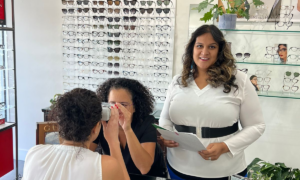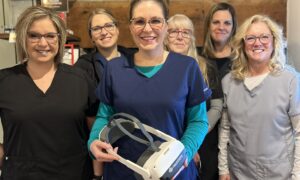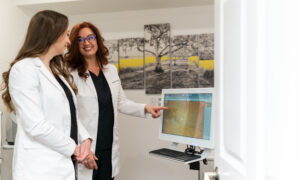
Dr. Mena says short-term accounts are an essential ingredient to financial security.
High-earning place to save money, where you can access it whenever you need it.
By Vittorio Mena, OD, MS
May 22, 2024
In my last column, I focused on the first level of “your financial house,” which was having a proper emergency fund and income protection.
Now it is time to walk up the steps to the second floor, which brings us to the short-term account. This is similar to, but different, from an emergency account.
Short-term accounts are typically for when you might need money 3-5 years from when you open the account, or sooner.
Why You Need a Short-Term Account
Our mission with our hard-working money is to give every dollar a purpose. This is why it is important to have three separate accounts in the first two floors of your financial house: a bank account, emergency fund and a short-term investment account.
The beauty of having a short-term account, which is usually invested in the stock market, is that it is extremely liquid, meaning you have access to it whenever you need it.
Short-term accounts also come with lower risk (safety) investments so that you minimize taking major hits in the market that deplete your funds just when you may need them. In addition, short-term accounts can come with low transaction costs.
Short-Term Account Options
There are multiple options when it comes to short-term investments: money market accounts, money market mutual funds, short-term corporate/government/ or municipal bond funds and treasury bills.
The two most common short-term accounts are certificates of deposit (CDs) and high-yield savings accounts at a local bank, an online bank or credit union.
Since inflation historically averages 3 percent, if you have money in a savings account at a bank earning less than the inflation rate, your buying power in the future will be much less. At the end of the year, the one dollar you put into the account will be worth 97 cents.
Other Articles to Explore
As I write this, the current inflation rate is 3.36 percent. This is why it is important to switch your mindset from saving to investing, or finding a high-yield savings account at a bank that earns higher than 3 percent.
Those who want their money invested in the market, but want the least risk exposure, should put their money into treasury bills, known as T-bills, T-bonds and T-notes, or mortgage-backed securities.
Depending on the state you live in, corporate and municipal funds offer potential tax incentives, along with the beauty of a higher interest rate than a typical bank. This offers a double win because these funds also pay out dividends, whether quarterly or twice a year.
No-penalty CDs are yet another option. Choosing this option means you would not have to pay a fee for canceling your CD before it matures. With traditional CDs, you have to keep your money there until it matures or get penalized.
Here is a guide for which kind of account to choose depending on when you will need access to your money:
1. One year or less = High-yield savings accounts and money market accounts that average 3-5 percent.
2. Two to three years = Bond funds, CDs and treasury bills averaging between 4-5 percent.
3. Three to five years = Bond funds, CDs and stocks for longer periods averaging between 5-12 percent.
Here is a guide with potential averages for investing yields in the market:
1. Dividend Stocks: 3-5 percent
2. Real Estate Investment Trusts: 4-6 percent
3. Municipal Bonds: 4-7 percent
a. Free from federal taxes and potential state and local taxes if you own some from the state you reside in.
b. Optometrists tend to be in the 24 percent tax bracket, so a potential muni-yield that averages 3 percent would actually be 3.95 percent, and if you were in the 37 percent tax bracket, it could average 4.76 percent.
4. Short-Term accounts: 5 percent
a. Put into either 1-to-5-year bonds
5. Investment Grade Bonds: 5-7 percent
6. Midstream Energy Infrastructure: 5-8 percent
a. Require K-1s annually for tax purposes
7. High-Yield Taxable Bonds: 6-9 percent
8. Business Development Companies: 9-10 percent
9. Closed-End Funds: 4-12 percent
a. Municipal bonds represent about 33 percent
Remember, it all comes down to your tolerance level on risk in the market, as well as your current age and what you need the money for.
Banks, CDs and bonds offer the most safety whereas stocks carry the most risk. That’s why it is important to diversify in many different stocks to create a well-balanced portfolio so that if a “storm” were to happen you would still be afloat.
Stay tuned for my next article to learn about the third level of the house!
 Vittorio Mena OD, MS, is the sports vision director with Optical Academy. Dr. Mena is also an Optometric Financial Planner, with Series 6 and 63 investment licenses and Series 2-14 life and variable annuity licenses. To contact him: menavitt@gmail.com
Vittorio Mena OD, MS, is the sports vision director with Optical Academy. Dr. Mena is also an Optometric Financial Planner, with Series 6 and 63 investment licenses and Series 2-14 life and variable annuity licenses. To contact him: menavitt@gmail.com



























